From Launch to Operations: The Latest on NOAA-20
Special Stories
12 Mar 2018 10:08 AM
From NOAA
The launch of JPSS-1 (now NOAA-20) was officially deemed a success about one hour after liftoff on November 18, 2017, when the satellite separated from the upper stage of the Delta II launch vehicle and its solar array deployed. Mission accomplished then, right? Not quite.
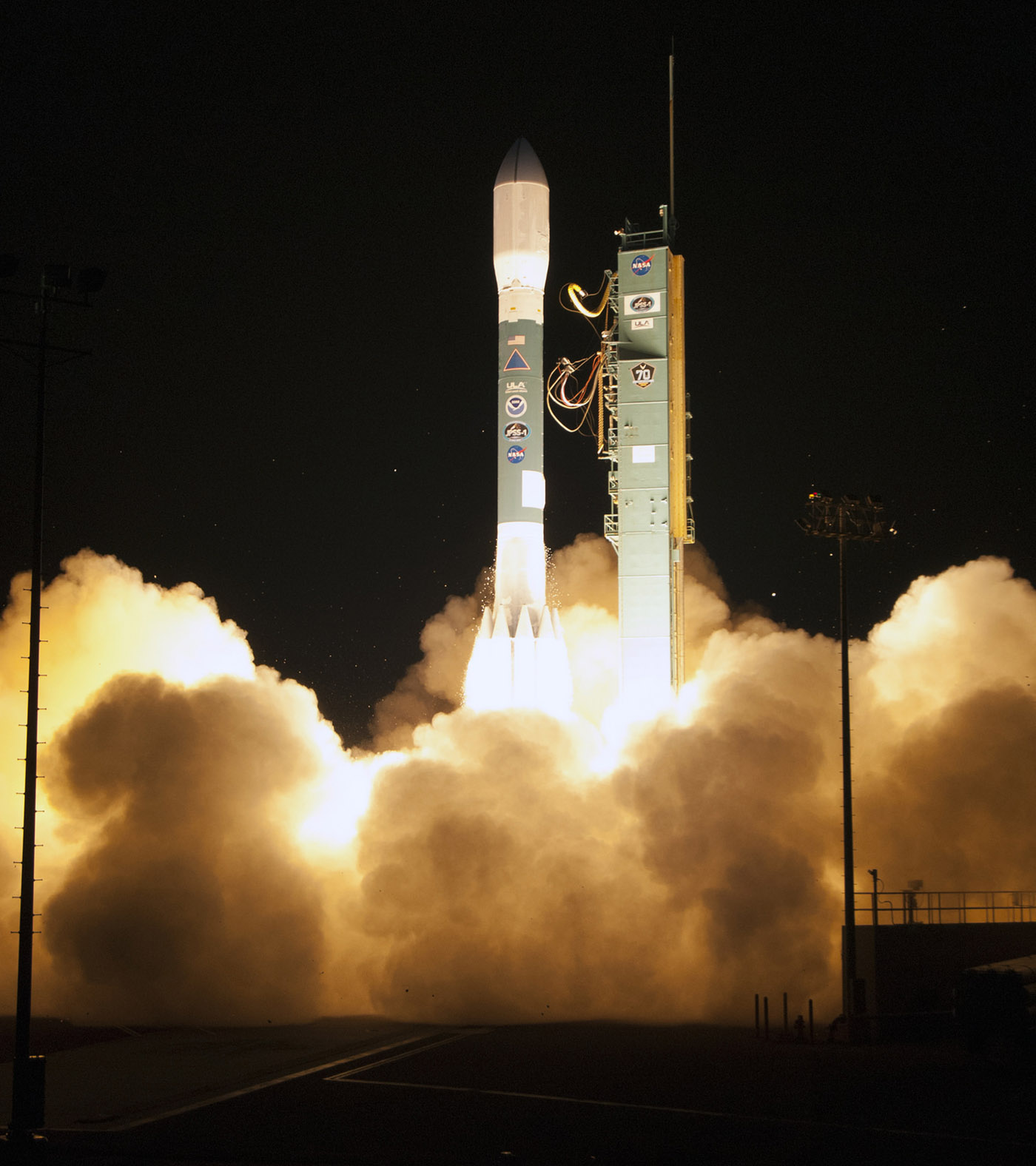 [JPSS-1 (NOAA-20) lifts off from Vandenberg Air Force Base on November 18, 2017.]
For the past three months, NOAA-20 has been checked out by scores of engineers and scientists from NASA, NOAA, and the Joint Polar Satellite System’s industry partners – Ball Aerospace, Raytheon Space and Airborne Systems, Northrop Grumman Aerospace Systems, and Harris Corporation – who have tested everything from the satellite’s communications systems to its scientific instruments. This testing continues, round-the-clock, until the satellite is deemed ready for handover to NOAA for routine operations.
[JPSS-1 (NOAA-20) lifts off from Vandenberg Air Force Base on November 18, 2017.]
For the past three months, NOAA-20 has been checked out by scores of engineers and scientists from NASA, NOAA, and the Joint Polar Satellite System’s industry partners – Ball Aerospace, Raytheon Space and Airborne Systems, Northrop Grumman Aerospace Systems, and Harris Corporation – who have tested everything from the satellite’s communications systems to its scientific instruments. This testing continues, round-the-clock, until the satellite is deemed ready for handover to NOAA for routine operations.
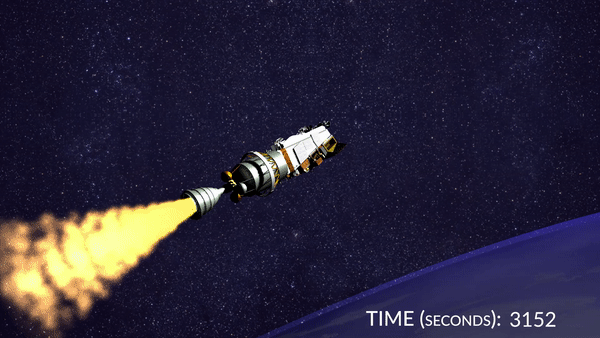 In general, checkout consists of four phases: spacecraft commissioning, outgassing, instrument activation and instrument performance characterization, and operational science testing. Note that these activities do not take place in linear fashion, but often occur simultaneously.
In general, checkout consists of four phases: spacecraft commissioning, outgassing, instrument activation and instrument performance characterization, and operational science testing. Note that these activities do not take place in linear fashion, but often occur simultaneously.
 [The JPSS-1 spacecraft bus. (Image credit: Ball Aerospace)]Spacecraft commissioning begins soon after launch and focuses on tests of the spacecraft’s primary systems.
"[The spacecraft] has a number of systems that run the satellite, says Tom Wrublewski, Physical Scientist with NOAA’s Joint Polar Satellite System program. “The key ones are the power system: the solar array has to deploy right after launch to recharge the batteries; the attitude control system, which keeps the satellite flying right and facing the earth; the communication system, which is composed of several antennas and transmitters that send both health and safety or housekeeping data to the operators and mission data to ground stations; and the computer/data system that monitors and controls the spacecraft in flight to make sure everything is operating smoothly.”
Also included in this phase are checks of the satellite’s propulsion system, which is used during orbit-raising, station-keeping and then at the end of mission to de-orbit the satellite safely into the ocean.
[The JPSS-1 spacecraft bus. (Image credit: Ball Aerospace)]Spacecraft commissioning begins soon after launch and focuses on tests of the spacecraft’s primary systems.
"[The spacecraft] has a number of systems that run the satellite, says Tom Wrublewski, Physical Scientist with NOAA’s Joint Polar Satellite System program. “The key ones are the power system: the solar array has to deploy right after launch to recharge the batteries; the attitude control system, which keeps the satellite flying right and facing the earth; the communication system, which is composed of several antennas and transmitters that send both health and safety or housekeeping data to the operators and mission data to ground stations; and the computer/data system that monitors and controls the spacecraft in flight to make sure everything is operating smoothly.”
Also included in this phase are checks of the satellite’s propulsion system, which is used during orbit-raising, station-keeping and then at the end of mission to de-orbit the satellite safely into the ocean.
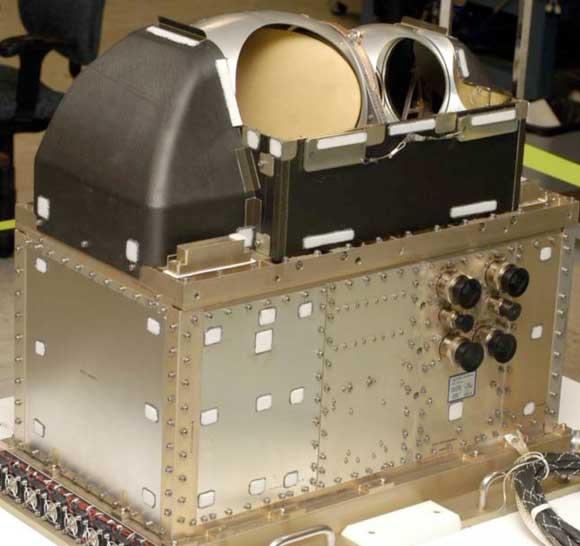 [NOAA-20's Advanced Technology Microwave Sounder was the first instrument to be turned on and the first to send back science data.]
In the second phase, engineers focus on getting NOAA-20’s instruments ready for operation. As with any other electronic device, the engineers must first to turn them on to make sure they are operating as expected, and then complete an outgassing period, before opening the doors protecting their sensors. During the outgassing period, any chemical residues or water vapor from the materials used on the satellite or in the instruments evaporates into the vacuum of space.
“You try to keep everything clean on the ground, but it’s very hard," Wrublewski explains. "The multi-layer insulation blankets used to protect the instruments hold water vapor and, when the satellite gets into space, the instruments use a series of heaters and the vacuum of space to drive them off. Instruments like VIIRS, CrIS, CERES, and OMPS have sensitive optics that need to be protected from these contaminates, so we give them a chance to migrate away from the spacecraft during the early weeks [of checkout].”
[NOAA-20's Advanced Technology Microwave Sounder was the first instrument to be turned on and the first to send back science data.]
In the second phase, engineers focus on getting NOAA-20’s instruments ready for operation. As with any other electronic device, the engineers must first to turn them on to make sure they are operating as expected, and then complete an outgassing period, before opening the doors protecting their sensors. During the outgassing period, any chemical residues or water vapor from the materials used on the satellite or in the instruments evaporates into the vacuum of space.
“You try to keep everything clean on the ground, but it’s very hard," Wrublewski explains. "The multi-layer insulation blankets used to protect the instruments hold water vapor and, when the satellite gets into space, the instruments use a series of heaters and the vacuum of space to drive them off. Instruments like VIIRS, CrIS, CERES, and OMPS have sensitive optics that need to be protected from these contaminates, so we give them a chance to migrate away from the spacecraft during the early weeks [of checkout].”
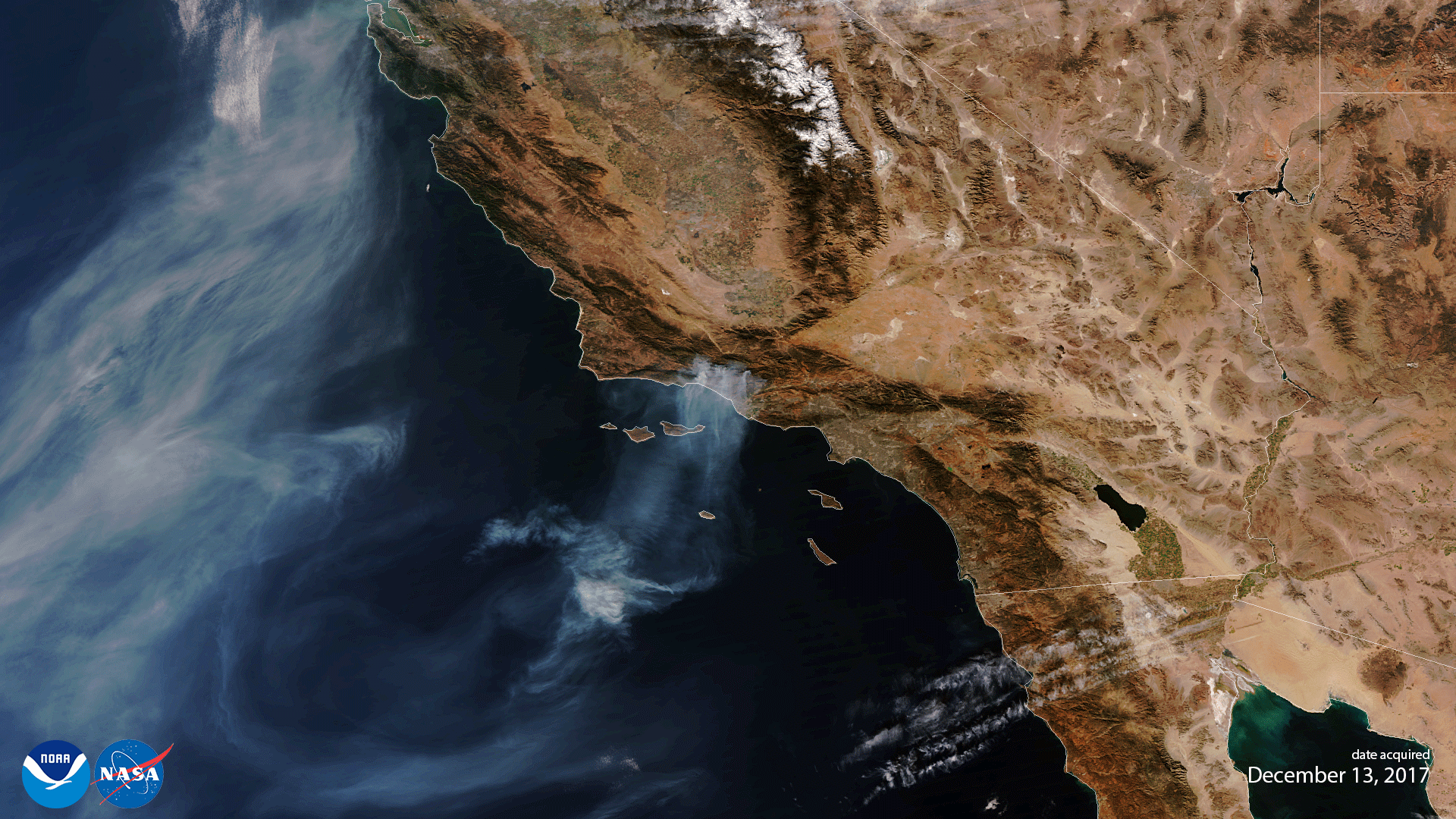 [This image of the December 2017 wildfies in Santa Barbara, California, was created with data from NOAA-20's Visible Infrared Imaging Radiometer Suite Instrument.
The engineers test the satellite by directing it to perform a series of maneuvers, including rolls (side-to-side movements), yaws (twisting the spacecraft left and right) and a pitch or “back flip,” in which the satellite is flipped 180 degrees. These maneuvers give the satellite's engineers and operators a better understanding of the interactions between the instruments and the spacecraft, and how various aspects of the space environment are affecting the sensors (such as the amount of light reaching sensitive instrument sensors).
The final phase, operational science testing, involves inspecting the quality of the instrument data, or as Bryan Fafaul, project manager with the Joint Polar Satellite System Flight Project puts it, “making sure the instrument data sent back via the ground system are what you think they’re supposed to be.”
[This image of the December 2017 wildfies in Santa Barbara, California, was created with data from NOAA-20's Visible Infrared Imaging Radiometer Suite Instrument.
The engineers test the satellite by directing it to perform a series of maneuvers, including rolls (side-to-side movements), yaws (twisting the spacecraft left and right) and a pitch or “back flip,” in which the satellite is flipped 180 degrees. These maneuvers give the satellite's engineers and operators a better understanding of the interactions between the instruments and the spacecraft, and how various aspects of the space environment are affecting the sensors (such as the amount of light reaching sensitive instrument sensors).
The final phase, operational science testing, involves inspecting the quality of the instrument data, or as Bryan Fafaul, project manager with the Joint Polar Satellite System Flight Project puts it, “making sure the instrument data sent back via the ground system are what you think they’re supposed to be.”
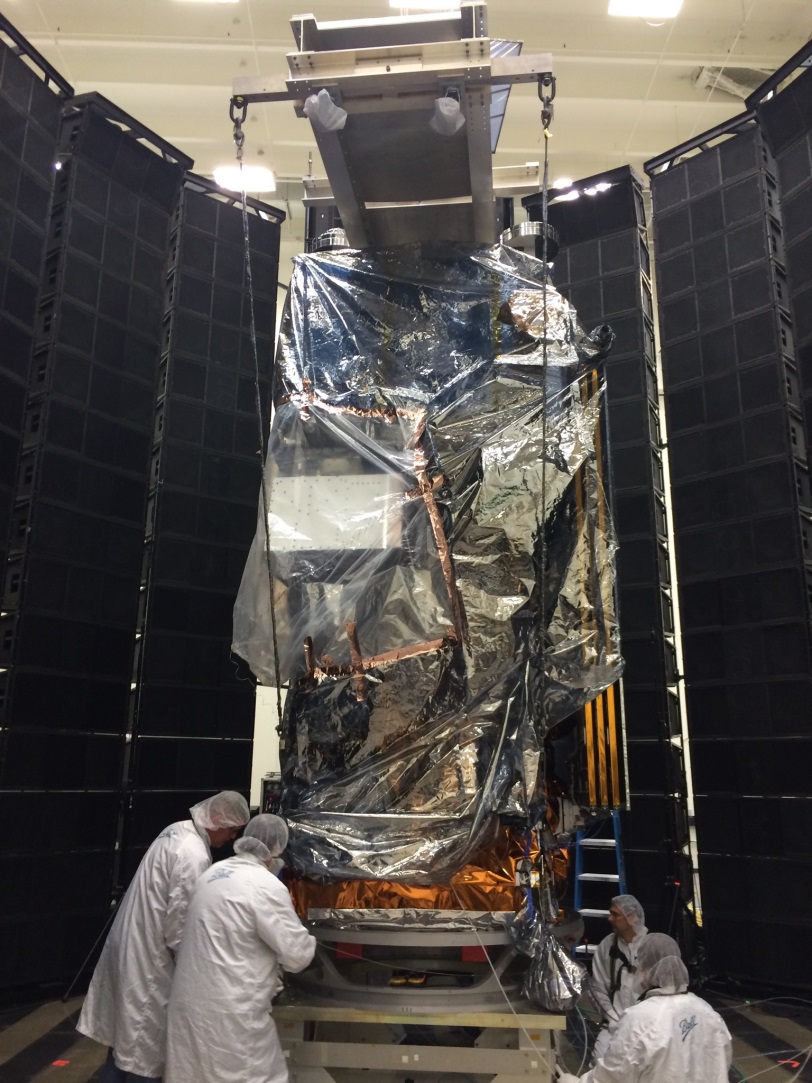 [JPSS-1 (now NOAA-20) during pre-launch testing.
“You expect to learn things after launching a satellite. It’ll never be perfect because you can’t test exactly for how the satellite or its instruments will behave in space while they’re still on-the-ground,” Fafaul explains. “Once you get the satellite up there and all the systems are working, anomalies will occur.”
So what happens when an anomaly – a deviation from what is expected – occurs?
“The JPSS’s Mission Systems Manager will assemble what’s known as an anomaly response team – a group composed of NOAA, NASA and industry personnel with in-depth knowledge of the system or instrument,” says Wrublewski. “Once assembled, the members of this team meet to discuss the issue and develop a plan to address it.”
Once resolved, the anomaly is then documented (extensively) so the operators who will control NOAA-20 after it’s declared operational will know what to do if the anomaly happens again.
[JPSS-1 (now NOAA-20) during pre-launch testing.
“You expect to learn things after launching a satellite. It’ll never be perfect because you can’t test exactly for how the satellite or its instruments will behave in space while they’re still on-the-ground,” Fafaul explains. “Once you get the satellite up there and all the systems are working, anomalies will occur.”
So what happens when an anomaly – a deviation from what is expected – occurs?
“The JPSS’s Mission Systems Manager will assemble what’s known as an anomaly response team – a group composed of NOAA, NASA and industry personnel with in-depth knowledge of the system or instrument,” says Wrublewski. “Once assembled, the members of this team meet to discuss the issue and develop a plan to address it.”
Once resolved, the anomaly is then documented (extensively) so the operators who will control NOAA-20 after it’s declared operational will know what to do if the anomaly happens again.
 [JPSS-1 (NOAA-20) lifts off from Vandenberg Air Force Base on November 18, 2017.]
For the past three months, NOAA-20 has been checked out by scores of engineers and scientists from NASA, NOAA, and the Joint Polar Satellite System’s industry partners – Ball Aerospace, Raytheon Space and Airborne Systems, Northrop Grumman Aerospace Systems, and Harris Corporation – who have tested everything from the satellite’s communications systems to its scientific instruments. This testing continues, round-the-clock, until the satellite is deemed ready for handover to NOAA for routine operations.
[JPSS-1 (NOAA-20) lifts off from Vandenberg Air Force Base on November 18, 2017.]
For the past three months, NOAA-20 has been checked out by scores of engineers and scientists from NASA, NOAA, and the Joint Polar Satellite System’s industry partners – Ball Aerospace, Raytheon Space and Airborne Systems, Northrop Grumman Aerospace Systems, and Harris Corporation – who have tested everything from the satellite’s communications systems to its scientific instruments. This testing continues, round-the-clock, until the satellite is deemed ready for handover to NOAA for routine operations.
Four Phases
 In general, checkout consists of four phases: spacecraft commissioning, outgassing, instrument activation and instrument performance characterization, and operational science testing. Note that these activities do not take place in linear fashion, but often occur simultaneously.
In general, checkout consists of four phases: spacecraft commissioning, outgassing, instrument activation and instrument performance characterization, and operational science testing. Note that these activities do not take place in linear fashion, but often occur simultaneously.
Commissioning the spacecraft
 [The JPSS-1 spacecraft bus. (Image credit: Ball Aerospace)]Spacecraft commissioning begins soon after launch and focuses on tests of the spacecraft’s primary systems.
"[The spacecraft] has a number of systems that run the satellite, says Tom Wrublewski, Physical Scientist with NOAA’s Joint Polar Satellite System program. “The key ones are the power system: the solar array has to deploy right after launch to recharge the batteries; the attitude control system, which keeps the satellite flying right and facing the earth; the communication system, which is composed of several antennas and transmitters that send both health and safety or housekeeping data to the operators and mission data to ground stations; and the computer/data system that monitors and controls the spacecraft in flight to make sure everything is operating smoothly.”
Also included in this phase are checks of the satellite’s propulsion system, which is used during orbit-raising, station-keeping and then at the end of mission to de-orbit the satellite safely into the ocean.
[The JPSS-1 spacecraft bus. (Image credit: Ball Aerospace)]Spacecraft commissioning begins soon after launch and focuses on tests of the spacecraft’s primary systems.
"[The spacecraft] has a number of systems that run the satellite, says Tom Wrublewski, Physical Scientist with NOAA’s Joint Polar Satellite System program. “The key ones are the power system: the solar array has to deploy right after launch to recharge the batteries; the attitude control system, which keeps the satellite flying right and facing the earth; the communication system, which is composed of several antennas and transmitters that send both health and safety or housekeeping data to the operators and mission data to ground stations; and the computer/data system that monitors and controls the spacecraft in flight to make sure everything is operating smoothly.”
Also included in this phase are checks of the satellite’s propulsion system, which is used during orbit-raising, station-keeping and then at the end of mission to de-orbit the satellite safely into the ocean.
Activating and outgassing the instruments
 [NOAA-20's Advanced Technology Microwave Sounder was the first instrument to be turned on and the first to send back science data.]
In the second phase, engineers focus on getting NOAA-20’s instruments ready for operation. As with any other electronic device, the engineers must first to turn them on to make sure they are operating as expected, and then complete an outgassing period, before opening the doors protecting their sensors. During the outgassing period, any chemical residues or water vapor from the materials used on the satellite or in the instruments evaporates into the vacuum of space.
“You try to keep everything clean on the ground, but it’s very hard," Wrublewski explains. "The multi-layer insulation blankets used to protect the instruments hold water vapor and, when the satellite gets into space, the instruments use a series of heaters and the vacuum of space to drive them off. Instruments like VIIRS, CrIS, CERES, and OMPS have sensitive optics that need to be protected from these contaminates, so we give them a chance to migrate away from the spacecraft during the early weeks [of checkout].”
[NOAA-20's Advanced Technology Microwave Sounder was the first instrument to be turned on and the first to send back science data.]
In the second phase, engineers focus on getting NOAA-20’s instruments ready for operation. As with any other electronic device, the engineers must first to turn them on to make sure they are operating as expected, and then complete an outgassing period, before opening the doors protecting their sensors. During the outgassing period, any chemical residues or water vapor from the materials used on the satellite or in the instruments evaporates into the vacuum of space.
“You try to keep everything clean on the ground, but it’s very hard," Wrublewski explains. "The multi-layer insulation blankets used to protect the instruments hold water vapor and, when the satellite gets into space, the instruments use a series of heaters and the vacuum of space to drive them off. Instruments like VIIRS, CrIS, CERES, and OMPS have sensitive optics that need to be protected from these contaminates, so we give them a chance to migrate away from the spacecraft during the early weeks [of checkout].”
Instrument calibration and operational testing
Following activation and outgassing of the instruments, engineers check to see if the instruments are performing as expected based on pre-launch tests, and in comparison to the instruments on NOAA-20’s predecessor, the NOAA-NASA Suomi NPP satellite. [This image of the December 2017 wildfies in Santa Barbara, California, was created with data from NOAA-20's Visible Infrared Imaging Radiometer Suite Instrument.
The engineers test the satellite by directing it to perform a series of maneuvers, including rolls (side-to-side movements), yaws (twisting the spacecraft left and right) and a pitch or “back flip,” in which the satellite is flipped 180 degrees. These maneuvers give the satellite's engineers and operators a better understanding of the interactions between the instruments and the spacecraft, and how various aspects of the space environment are affecting the sensors (such as the amount of light reaching sensitive instrument sensors).
The final phase, operational science testing, involves inspecting the quality of the instrument data, or as Bryan Fafaul, project manager with the Joint Polar Satellite System Flight Project puts it, “making sure the instrument data sent back via the ground system are what you think they’re supposed to be.”
[This image of the December 2017 wildfies in Santa Barbara, California, was created with data from NOAA-20's Visible Infrared Imaging Radiometer Suite Instrument.
The engineers test the satellite by directing it to perform a series of maneuvers, including rolls (side-to-side movements), yaws (twisting the spacecraft left and right) and a pitch or “back flip,” in which the satellite is flipped 180 degrees. These maneuvers give the satellite's engineers and operators a better understanding of the interactions between the instruments and the spacecraft, and how various aspects of the space environment are affecting the sensors (such as the amount of light reaching sensitive instrument sensors).
The final phase, operational science testing, involves inspecting the quality of the instrument data, or as Bryan Fafaul, project manager with the Joint Polar Satellite System Flight Project puts it, “making sure the instrument data sent back via the ground system are what you think they’re supposed to be.”
Learning along the way
There are moments during checkout, however, when instrument data or something associated with a satellite subsystem doesn’t behave as expected. [JPSS-1 (now NOAA-20) during pre-launch testing.
“You expect to learn things after launching a satellite. It’ll never be perfect because you can’t test exactly for how the satellite or its instruments will behave in space while they’re still on-the-ground,” Fafaul explains. “Once you get the satellite up there and all the systems are working, anomalies will occur.”
So what happens when an anomaly – a deviation from what is expected – occurs?
“The JPSS’s Mission Systems Manager will assemble what’s known as an anomaly response team – a group composed of NOAA, NASA and industry personnel with in-depth knowledge of the system or instrument,” says Wrublewski. “Once assembled, the members of this team meet to discuss the issue and develop a plan to address it.”
Once resolved, the anomaly is then documented (extensively) so the operators who will control NOAA-20 after it’s declared operational will know what to do if the anomaly happens again.
[JPSS-1 (now NOAA-20) during pre-launch testing.
“You expect to learn things after launching a satellite. It’ll never be perfect because you can’t test exactly for how the satellite or its instruments will behave in space while they’re still on-the-ground,” Fafaul explains. “Once you get the satellite up there and all the systems are working, anomalies will occur.”
So what happens when an anomaly – a deviation from what is expected – occurs?
“The JPSS’s Mission Systems Manager will assemble what’s known as an anomaly response team – a group composed of NOAA, NASA and industry personnel with in-depth knowledge of the system or instrument,” says Wrublewski. “Once assembled, the members of this team meet to discuss the issue and develop a plan to address it.”
Once resolved, the anomaly is then documented (extensively) so the operators who will control NOAA-20 after it’s declared operational will know what to do if the anomaly happens again.
From checkout to operational
NOAA-20’s checkout phase concluded in mid-February 2018. That’s when Vanessa Griffin, Director of NOAA’s Office of Satellite and Product Operations (OSPO), and her deputies gathered with members of the JPSS Program and NASA’s MOST team to ensure that all requirements have been met – including the training of operations personnel. After NOAA completed its final checklist, NASA officially "handed over" NOAA-20 satellite command and control operations to OSPO, which manages the ingestion, processing, and distribution of NOAA satellite data and derived products to domestic and foreign users. While NOAA-20’s checkout phase is now complete, it doesn't mean the satellite is now operational. NOAA still needs to validate all satellite products before they are given the green light and deemed ready to use by the National Weather Service. When that work is complete, the satellite will be declared operational as NOAA's primary polar-orbiting weather satellite. Edited for WeatherNation by Meteorologist Mace MichaelsAll Weather News
More